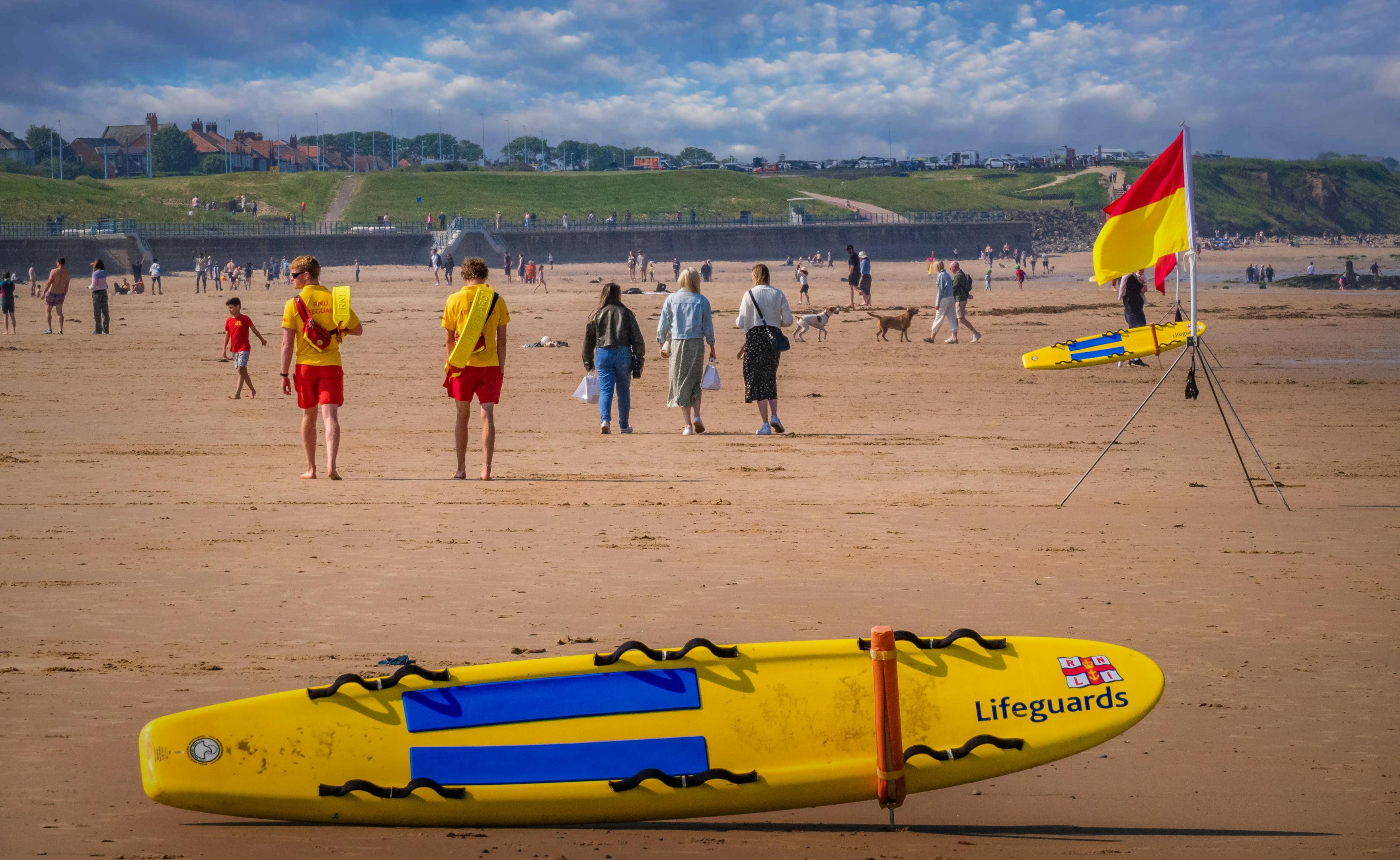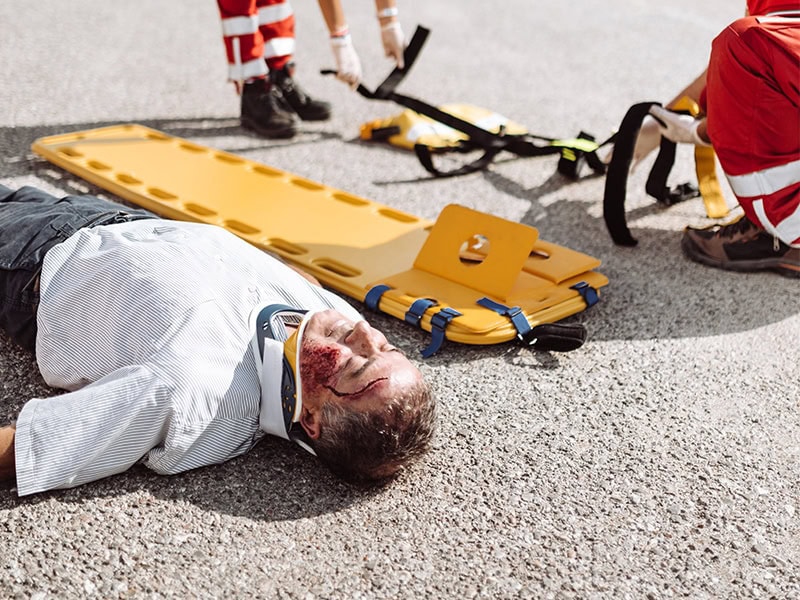Understanding the Lifeguard Backboard
A lifeguard backboard is one of the most important tools when it comes to handling spinal injuries during a rescue. It’s specially designed to grab and protect the head, neck, and torso while keeping the spine straight to prevent further harm.
There are different types of backboards, like long spine boards for full-body support, short boards for smaller spaces, and vest-style boards for specialized rescues. Each has its own purpose, and knowing how to use them properly is essential for effective emergency care.
This guide will walk you through everything you need to know to use these boards safely and efficiently, ensuring the best possible care in critical situations.
Preparing for Spine Board Use
Before using a lifeguard backboard, assess the situation and the patient’s condition to determine if spinal immobilization is necessary. Check for any contraindications, such as a suspected neck injury or the need for full immobilization.
Inspect the spine board for any damage or wear, and ensure all straps, buckles, and head immobilizers are secured and functional. Confirm the board’s weight capacity and dimensions to ensure it’s appropriate for the patient.
Grab the spine board firmly and position it close to the victim, keeping it aligned for an easy transfer. Arrange the straps to prevent tangling and add padding where necessary, particularly for the head and back.
Use proper techniques like a log roll to move the patient onto the backboard while maintaining spinal alignment. Secure the patient with a strap, starting from the chest and moving downward. Ensure the head is immobilized and secured with a head block or padding. Precise preparation can make every action count when time is critical.
Double-check everything: confirm straps are snug but not too tight, and monitor the patient’s circulation. Make sure the patient is comfortable, stable, and well-supported during transport.
The Role of Lifeguard Spine Boards in Water Safety
Stabilization:
Spine boards are a lifeguard’s first line of defense when it comes to spinal injury prevention. These boards are designed to stabilize a patient’s head, chest, and spine during a rescue, which is crucial to avoid making a bad situation worse. By securing the head and neck with the spine board, the lifeguard prevents unnecessary movement, keeping the spine aligned and preventing exacerbation of injuries.
Positioning is everything when rescuing victims during accidents. A spine board ensures the person stays in a neutral position, which is vital for spinal cord injury cases. It helps reduce pressure on the spine and assists in safe transport. This stabilization is particularly important in water, where the victim might be at risk of floating or shifting unexpectedly.
Water Rescue Scenarios:
Lifeguards use spine boards in various rescue situations, such as poolside, beach, or boat rescues, especially when spinal injury is suspected. The backboard is key when the victim is unconscious or unresponsive, ensuring the spine stays aligned to increase safety during transport.
Whether the accident happens in shallow or deep water, spine boards help prevent further harm by stabilizing the victim. In deeper water, the buoyancy of the spine board supports the victim, allowing for safer and more controlled movement toward shore. In these critical situations, backboards ensure lifeguards can safely stabilize and transport the patient with minimal risk.

Backboard Techniques
- Maintain Spinal Integrity: Ensure the patient’s head, chest and spine remain aligned throughout the process to prevent further injury.
- Team Approach: Work with a team to log-roll the patient onto the spine board, keeping the spine in a neutral position.
- Secure the Patient: Use straps and accessories to immobilize the head, neck, and torso, ensuring they are secured during removal from water.
- Align the Body: Position the patient’s body in a straight line and parallel to the spine board to maintain proper alignment.
- Monitor for Movement: Continuously check for any movement during the process to ensure spinal integrity.
Safety Considerations and Precautions
When using a spine board, it’s essential to prioritize safety to prevent further injury. Here are key considerations:
- Always follow proper safety protocols when using a spine board, such as wearing gloves and ensuring your team is properly prepared.
- Ensure that the environment around the rescue site is secured, as conditions like water currents or uneven terrain can change quickly, posing additional risks.
- Handle the spine board with care, as it is lightweight and can float on water. These features enhance its utility in rescue situations, but proper handling techniques and teamwork are still essential.
- Never leave a patient unattended on a spine board, as movement or improper handling could worsen their condition.
- Check the spine board and all accessories before use to ensure they are in good working condition.
Spinal Injury Assessment and Management
When assessing and managing a potential spinal injury, it’s crucial to approach the case methodically to ensure the patient’s safety and well-being. Here’s a straightforward guide to help you through the process:
Initial Assessment
- Look for Signs of Trauma: Check for visible injuries like bruising, swelling, or deformities that might indicate a spinal injury.
- Check Sensation and Movement: Ask the patient if they can feel sensations or move their limbs. A lack of sensation or movement can be a sign of spinal cord involvement.
- Use the ABCDE Approach: This stands for Airway, Breathing, Circulation, Disability (neurological status), and Exposure. It’s a systematic method to assess patients and prioritize life-threatening conditions.
Management
- Immobilize the Spine: If a spinal injury is suspected, keep the patient’s head and neck aligned with the spine. Use a spine board or cervical collar for in-line stabilization.
- Provide Supportive Care: Ensure the patient has an open airway, is breathing adequately, and has stable circulation. Monitor vital signs and be prepared to provide interventions as needed.
Remember, the goal is to prevent further injury while providing necessary care. Always work within your training and seek advanced medical assistance promptly.
For more detailed information, you can refer to the NICE guidelines on spinal injury assessment and initial management.
Stabilizing the Victim
When stabilizing a victim on a spine board, it’s essential to ensure the head, neck, and torso are securely immobilized to prevent further injury. Use straps and accessories such as head mobilizers and neck collars to maintain spinal integrity and minimize movement. Regularly check the victim’s position to ensure they remain stable, making any necessary adjustments to the spine board or straps as needed.
It’s important to note that while traditional hard backboards have been commonly used for spinal immobilization, recent clinical guidelines suggest that alternative methods, such as vacuum mattresses, may offer better patient comfort and similar or superior spinal stabilization. These methods can reduce the adverse effects associated with hard backboards, such as pressure ulcers and discomfort.
Additionally, the use of a rigid cervical collar in conjunction with a backboard is recommended to minimize movement and maintain spinal alignment during transport.
In cases where the victim is on one side, specialized padding and adjustments to the backboard increase the level of stabilization and reduce the chances of further injury. Low visibility and environmental factors can make it more challenging to maintain proper alignment, but using additional support equipment can help pull the victim to safety while immobilizing the spine.
Always follow established protocols and guidelines to ensure the safety and well-being of the victim during spinal immobilization.
Transporting the Victim
When transporting a victim on a spine board, it’s crucial to follow proper protocols for their safety.
- Ensure that the spine board is securely fastened to the stretcher or ambulance, preventing any unwanted movement.
- Throughout the transport, monitor the victim’s condition closely, watching for any changes in vital signs or signs of discomfort.
- If necessary, make adjustments to the board or straps to maintain stability and comfort.
- A coordinated team approach is important for carefully transferring the victim to the medical facility, ensuring that all actions are synchronized to minimize any risk.
- Always stay attentive to the victim’s well-being and make adjustments as needed to ensure a safe and effective transport.
Best Practices and Training
When it comes to using a lifeguard backboard, making sure you’re prepared and confident is key. The more familiar you are with the right techniques and protocols, the better you’ll be at handling spinal injuries safely and effectively. It’s all about practice and staying up-to-date with new information. Here are some things to keep in mind:
- Regular practice is crucial—repeating procedures helps build muscle memory, so you’re ready when it counts.
- Learn and stick to the standard protocols and guidelines for spine board use to make sure you’re doing things right every time.
- Stay current with new research and best practices in spinal injury management—medical advancements are always evolving, and you’ll want to be aware of the latest.
- Participate in regular drills and exercises so you can stay sharp and handle any real-life cases.
- Follow the latest guidelines on spinal motion restriction (SMR), which is essential for keeping your techniques up to date and ensuring the best outcomes.
Final Thoughts
A quick mental checklist can make all the difference. Assess the situation carefully, choose the right spine board, and secure the patient to prevent unnecessary movement or further injury. Always follow safety protocols and ensure proper stabilization before transport. Regular practice and training will keep your skills sharp and prepare you for emergencies when every second counts.
External Links
For more information and authoritative resources on lifeguard training and spine board use, check out the following:
- American Lifeguard Association: Offers comprehensive lifeguard training and certification. Visit americanlifeguard.com
- Red Cross Lifeguard Training: Provides essential lifeguard training courses, including spinal injury management. Visit redcross.org
- If you want to explore different lifeguard backboard options for a potential purchase, visit our page at Jiekang rescue.



